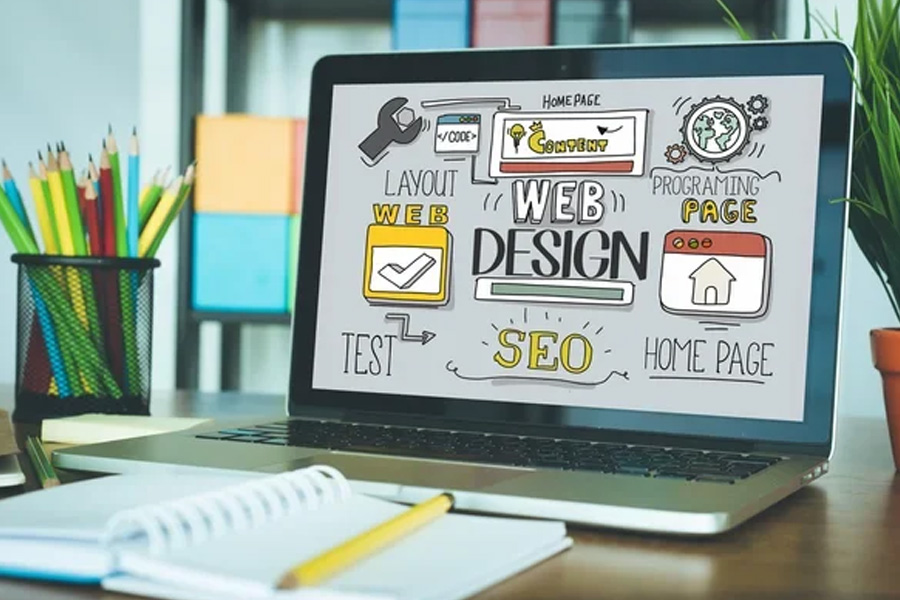
The Art and Science of Web Design: Principles, Trends, and Best Practices for 2024
Website design of websites is more than just making a website look appealing; it is the intersection of creativity and functionality, blending visual elements with a seamless user experience. As the internet continues to evolve, so do the standards and expectations of web design. In 2024, the web is faster, more dynamic, and more interactive than ever before, thanks to new technologies and changing user behavior. Creating an engaging and effective web design requires a careful balance of aesthetics, usability, accessibility, and performance.
In this article, we’ll explore the core principles of web design, examine current trends, and highlight best practices that can help designers create stunning and functional websites in 2024.
The Foundations of Web Design
Before diving into the latest trends, it’s important to understand the fundamental principles that underpin good web design. These core concepts have stood the test of time and continue to be relevant, regardless of the specific trends or technologies in play.
1. User-Centered Design
At the heart of any successful web design is the user. User-centered design (UCD) is an approach that focuses on creating websites that meet the needs, goals, and expectations of the end-users. This involves understanding your target audience through user research, including personas, user flows, and usability testing. A user-centered approach ensures that the website is not only visually appealing but also intuitive and functional, providing a seamless experience that encourages engagement and satisfaction.
2. Visual Hierarchy
Visual hierarchy refers to the arrangement of elements on a webpage in a way that guides users’ attention to the most important content first. Designers use size, color, contrast, and positioning to create a clear hierarchy. For instance, headlines are often bold and larger to capture attention, while secondary information is smaller and less prominent. A well-defined visual hierarchy makes it easier for users to scan the page and find the information they are looking for quickly.
3. Consistency and Simplicity
Consistency is a key factor in creating a cohesive and user-friendly website. This includes consistent use of fonts, colors, spacing, and visual elements across all pages. Consistency not only helps with branding but also improves usability by making the interface more predictable for users.
Simplicity, on the other hand, is about reducing complexity. A cluttered design with too many elements can overwhelm users and make navigation difficult. Simple, clean designs that focus on essential elements allow users to interact with the site without distraction.
4. Responsive and Adaptive Design
With the proliferation of mobile devices, responsive web design (RWD) has become a non-negotiable standard. Responsive design ensures that a website adapts to different screen sizes, from desktops to smartphones, providing a consistent user experience across devices. In addition to being responsive, adaptive design is another technique where the layout adjusts based on the user’s device or browser, delivering optimized experiences for different conditions.
5. Accessibility
An often-overlooked but essential aspect of web design is accessibility. Web accessibility ensures that websites are usable by people with disabilities, such as those with visual impairments, hearing loss, or cognitive challenges. This can be achieved through proper use of semantic HTML, descriptive alt text for images, keyboard navigability, and color contrast ratios that accommodate users with color blindness.
Ensuring that your website complies with accessibility standards, such as the Web Content Accessibility Guidelines (WCAG), not only makes it more inclusive but can also improve SEO and broaden your audience.
Web Design Trends for 2024
Web design is constantly evolving, influenced by technological advancements, user behavior, and cultural shifts. As we move into 2024, several trends are emerging that will shape the future of web design.
1. Dark Mode and Dynamic Color Schemes
Dark mode has gained widespread popularity across applications, websites, and operating systems, and in 2024, it remains a major trend in web design. Offering users the option to switch between light and dark modes provides a better user experience, especially in low-light environments. It also adds a sleek, modern aesthetic to websites.
Beyond just dark mode, dynamic color schemes allow users to customize the appearance of a site to match their preferences. This trend is driven by a desire for personalization and improved accessibility. By using CSS variables, designers can easily implement color scheme toggles that provide users with more control over their browsing experience.
2. Neumorphism
Neumorphism, a design trend that combines skeuomorphism (making UI elements resemble real-world objects) with flat design principles, continues to be a popular choice in 2024. This style creates a soft, 3D appearance using subtle shadows and highlights, giving interfaces a tactile feel. Neumorphism is often used for buttons, sliders, and card elements, providing a modern yet approachable aesthetic.
However, it’s important to use neumorphism sparingly, as overuse can reduce contrast and affect usability, particularly for users with visual impairments.
3. Minimalism with a Twist
Minimalist design has been a staple for years, but in 2024, it’s being reimagined with more playful elements. While minimalism still emphasizes clean lines, ample white space, and simplicity, designers are experimenting with bold typography, bright accent colors, and asymmetrical layouts to create more dynamic and engaging designs.
This approach keeps the focus on content and functionality while adding visual interest and personality to the design. The key to modern minimalism is balance—avoiding clutter but incorporating enough visual elements to keep users engaged.
4. Micro-Interactions and Animations
Micro-interactions are small, subtle animations or effects that occur in response to user actions, such as hovering over a button or clicking a link. These interactions help create a more interactive and engaging experience by providing feedback to users and enhancing usability. In 2024, we’re seeing more websites incorporate micro-interactions to improve the overall feel of the interface.
Animations are also becoming more sophisticated, with smoother transitions, dynamic scrolling effects, and animated illustrations. However, it’s important to use animations thoughtfully, as excessive use can slow down the site and overwhelm users.
5. Voice User Interfaces (VUI)
With the rise of smart speakers and voice-activated assistants, voice user interfaces (VUIs) are becoming more prevalent in web design. In 2024, websites are increasingly incorporating voice search functionality and voice commands, allowing users to interact with sites using their voice. This trend aligns with the growing demand for accessibility and hands-free navigation.
For designers, integrating voice interfaces requires a different approach to UX design, focusing on auditory feedback, simple commands, and seamless transitions between voice and traditional navigation.
6. 3D Elements and Immersive Experiences
The use of 3D elements in web design is increasing, thanks to advancements in web technologies like WebGL and improved browser support. In 2024, 3D visuals, animations, and interactive elements are being used to create more immersive experiences, particularly in industries like e-commerce, architecture, and entertainment.
These 3D elements can be anything from product visualizations to fully interactive environments that allow users to explore spaces or objects. As AR and VR technologies become more accessible, we’re likely to see even more websites leveraging these immersive experiences to engage users in new ways.
7. Inclusive Design and Diversity
In 2024, inclusivity and diversity are more important than ever in web design. This means creating websites that not only accommodate users with disabilities but also reflect diverse cultures, backgrounds, and perspectives. Visual representation, inclusive language, and culturally sensitive design elements are all crucial to building websites that resonate with a broader audience.
Designers are also paying closer attention to gender-neutral design, avoiding stereotypes, and ensuring that content and visuals are inclusive for all users, regardless of gender, race, or ability.
Best Practices for Web Design in 2024
Staying up-to-date with trends is important, but following best practices is essential to creating websites that are functional, user-friendly, and optimized for performance. Here are some key best practices for web design in 2024.
1. Optimize for Speed and Performance
Website speed is critical for both user experience and SEO. In 2024, users expect websites to load in under three seconds, and anything slower can lead to higher bounce rates. To optimize for speed, designers should prioritize performance by using efficient code, compressing images, minimizing JavaScript, and leveraging caching.
Lazy loading, which defers the loading of non-critical content until it’s needed, is another technique that can improve page load times, particularly for media-heavy websites.
2. Mobile-First Design
With the majority of web traffic coming from mobile devices, a mobile-first design approach is more important than ever. This means designing the mobile version of your site first and then scaling it up for larger screens. Mobile-first design ensures that the website is responsive and performs well on all devices, providing a consistent experience regardless of screen size.
In addition to responsive layouts, designers should consider mobile-specific features like touch-friendly navigation, larger buttons, and simplified forms to enhance the mobile user experience.
3. Prioritize Accessibility
Accessibility is not just a trend—it’s a requirement for creating inclusive websites. Following accessibility guidelines, such as WCAG, ensures that your website is usable by all users, including those with disabilities. This includes using proper HTML markup, providing alt text for images, ensuring sufficient color contrast, and making sure that all interactive elements are keyboard-accessible.
By prioritizing accessibility, you not only expand your audience but also improve your website’s SEO and overall usability.
4. SEO-Friendly Design
Good web design and SEO go hand-in-hand. In 2024, designers should keep SEO in mind from the start, ensuring that the site’s structure, code, and content are optimized for search engines. This includes using proper heading tags (H1, H2, etc.), implementing clean URLs, optimizing images with alt text, and ensuring that the site is mobile-friendly and fast-loading.
Core Web Vitals, which measure the user experience in terms of loading, interactivity, and visual stability, are also critical factors in Google’s ranking algorithm, making performance optimization a key consideration.
Conclusion
Web design in 2024 is a blend of creativity, technology, and user-centered principles. As trends continue to evolve, designers must stay informed about the latest developments while adhering to core principles that ensure usability, accessibility, and performance. By embracing new technologies like 3D elements, voice interfaces, and dynamic color schemes, while maintaining a focus on mobile-first design, inclusivity, and speed optimization, web designers can create websites that not only look great but also deliver exceptional user experiences.



